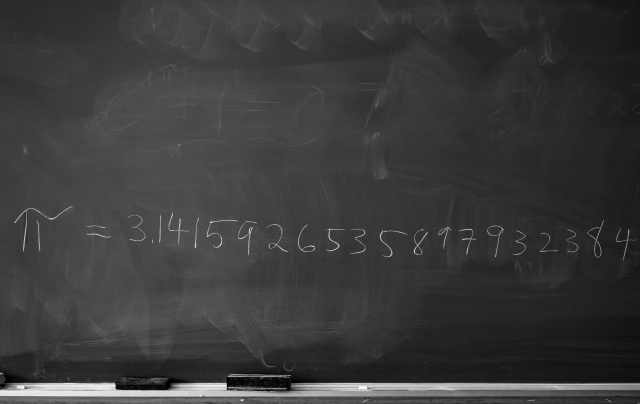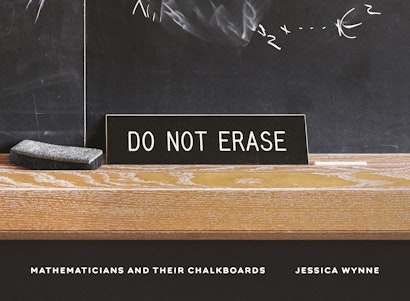Pi is magic. It is a number that is infinite, universal, transcendental, and irrational. It appears everywhere, and my mathematician friends tell me that Pi is as close to religion as you can get in math. Pi is a perplexing, elegant representation of something vast and profound. The symbol π was first used by William Jones, a Welsh mathematician, in 1706 as an abbreviation for the ratio of the circumference to the diameter of any circle, yet that description belies the power and range of Pi.
Pi can be fun. Some people enjoy playing games with Pi and challenge themselves by seeing how many digits they can memorize. Here is Pi to the 50th decimal point: 3.14159265358979323846264338 32795028841971693993751. Now, with the help of computers Pi has been calculated to 62.8 trillion decimal places. One of the allures of Pi is that we can’t totally know it and it goes on for infinity with no repetition or pattern. If there is a pattern, no one has discovered it yet.
I think it’s always more interesting when you cannot totally grasp or know a thing, there is a sense of mystery and unattainability. I am a visual artist—not a mathematician—but I have spent much of the last several years photographing the chalkboards of some of the greatest mathematicians in the world. I was interested in recognizing, celebrating, and seeing the beauty of higher mathematics. And I was lucky to be invited into the insular and mysterious world of mathematics through my friendship with the mathematicians Amie Wilkinson and Benson Farb, a married couple who both teach at the University of Chicago.
Amie and Benson are “theoretical” or “pure” mathematicians, which means they do “math for math’s sake.” They are interested in ideas, abstraction, exploring the boundaries of pure reason without explicit or immediate application in the physical world—akin to art, philosophy, poetry, and music. Practitioners of applied math, on the other hand, use theories and techniques to solve “practical” problems in the physical world. Although their objectives are different, these two branches of mathematics are inextricably linked: there are numerous examples of discoveries in pure math that were abstract at the time but would be revealed to have revolutionary applications years later. In fact, one could say that all modern technology is derived from pure mathematics.
Photographing the mathematical formulas on chalkboards was an interesting way for me to get a window into their world. As an outsider, the formulas and mathematical symbols were inaccessible to me. And I didn’t mind not knowing. I actually liked the tension of being seduced by the formal abstract beauty—the patterns, symmetry and structure—while simultaneously feeling totally disconnected, not being able to fully access the meaning of their work. This friction of being drawn in and pushed away was exciting to me. I may not know the specific meaning of the theorems, but I do know that beyond the surface they are ultimately revealing (or attempting to reveal) a universal truth.
The work of these mathematicians should be recognized and understood as important contributions to furthering knowledge and helping us understand the world around us. In fact, numbers and mathematics are in the fabric of our universe, and some mathematical Platonists believe that mathematics exists independently of the human mind, just as planets and stars exist. We should have more days in the year that celebrate numbers, mathematics, formulas, and mathematicians. But for now, on 3-14, let us pay tribute to and celebrate Pi, a ubiquitous, unique number that continues to fascinate us all.
Jessica Wynne is associate professor of photography at the Fashion Institute of Technology. Her photographs are in collections at the Morgan Library & Museum and the San Francisco Museum of Modern Art and have been exhibited at the Whitney Museum of American Art and the Cleveland Center for Contemporary Art. Her work has been featured in the New York Times, the Guardian, the New Yorker, and Fortune. Wynne is represented by Edwynn Houk Gallery and she lives in New York City. Twitter @jessicawynne6 Instagram @jessica___wynne Website www.jessicawynne.com

